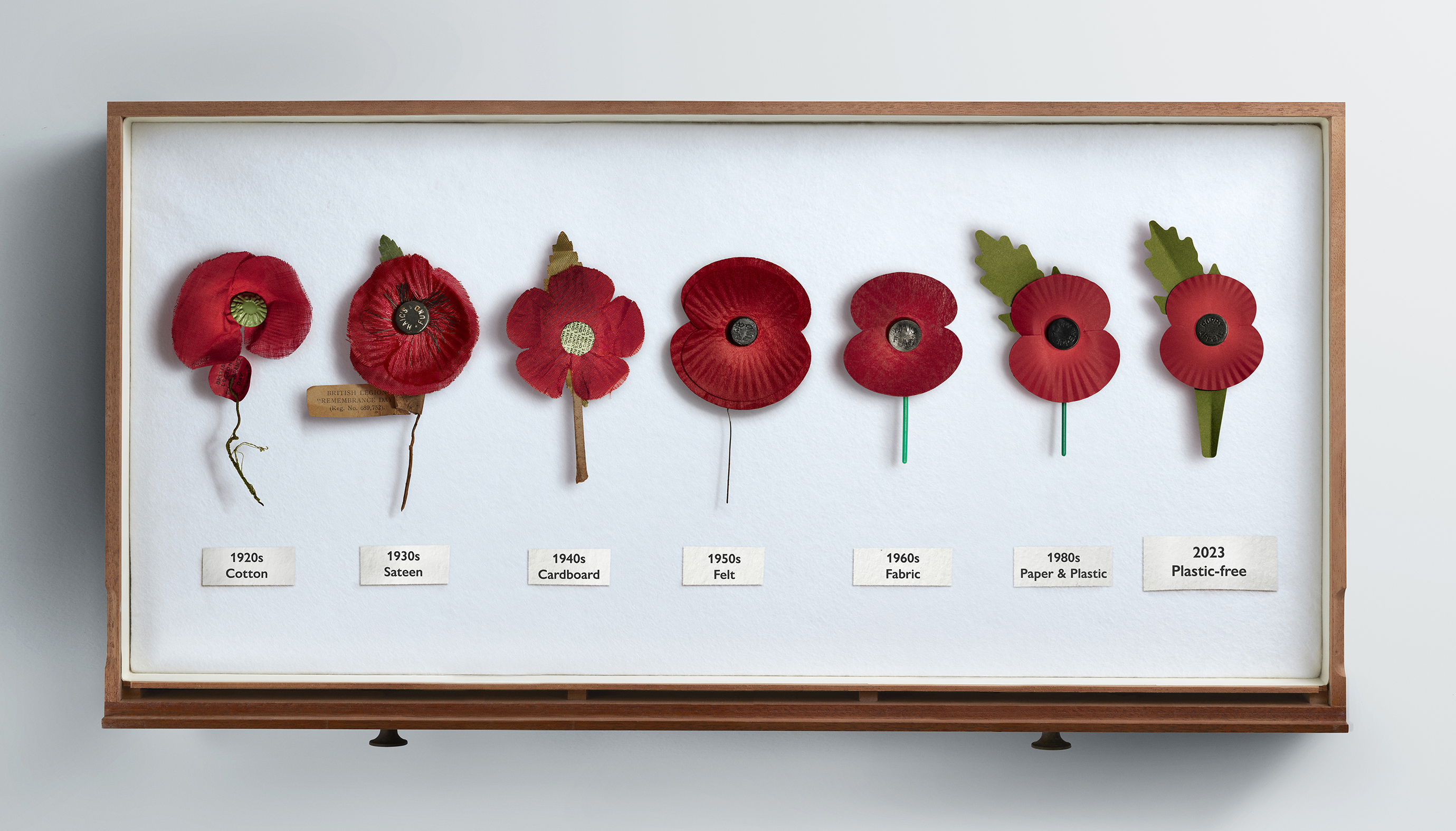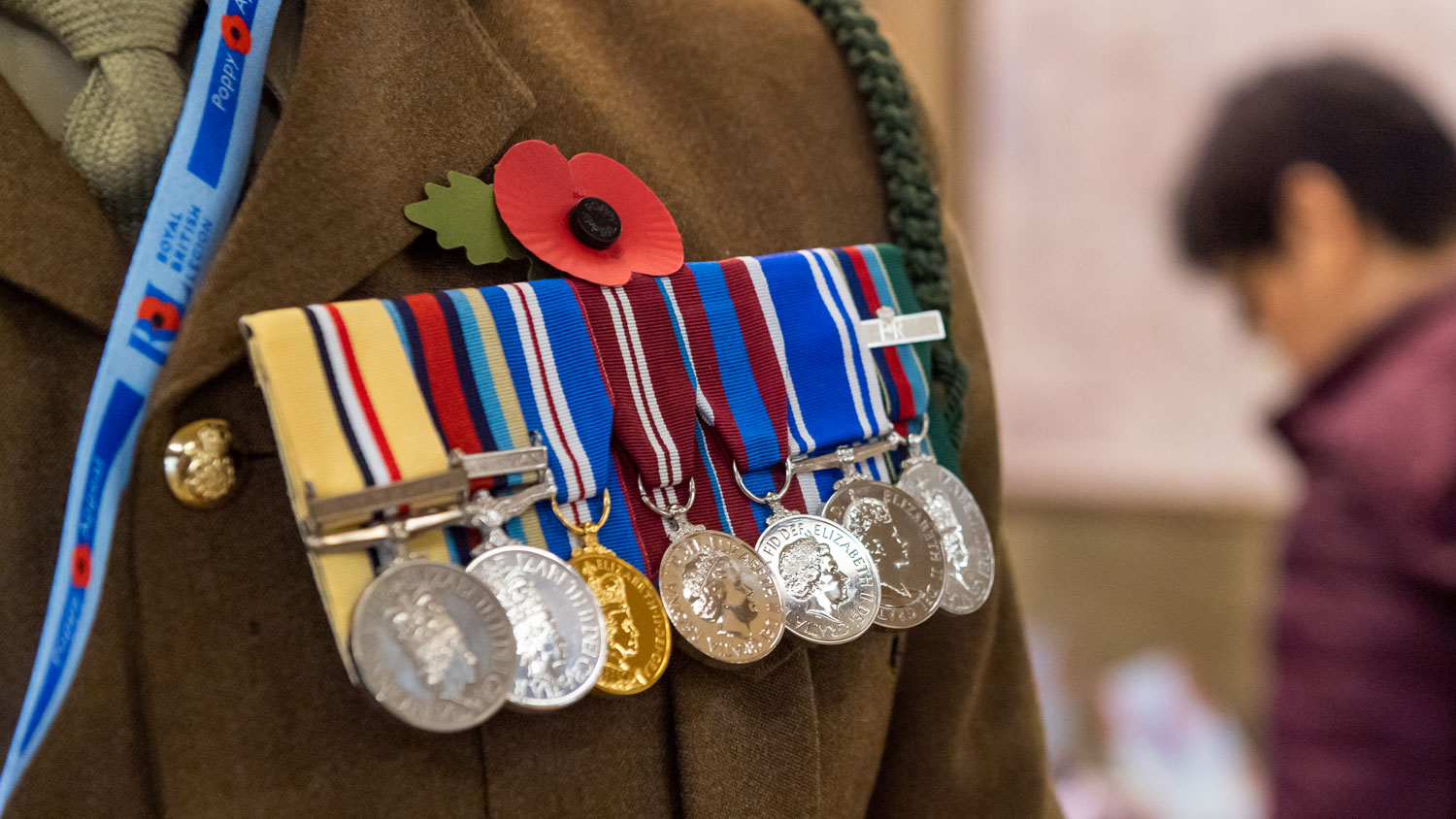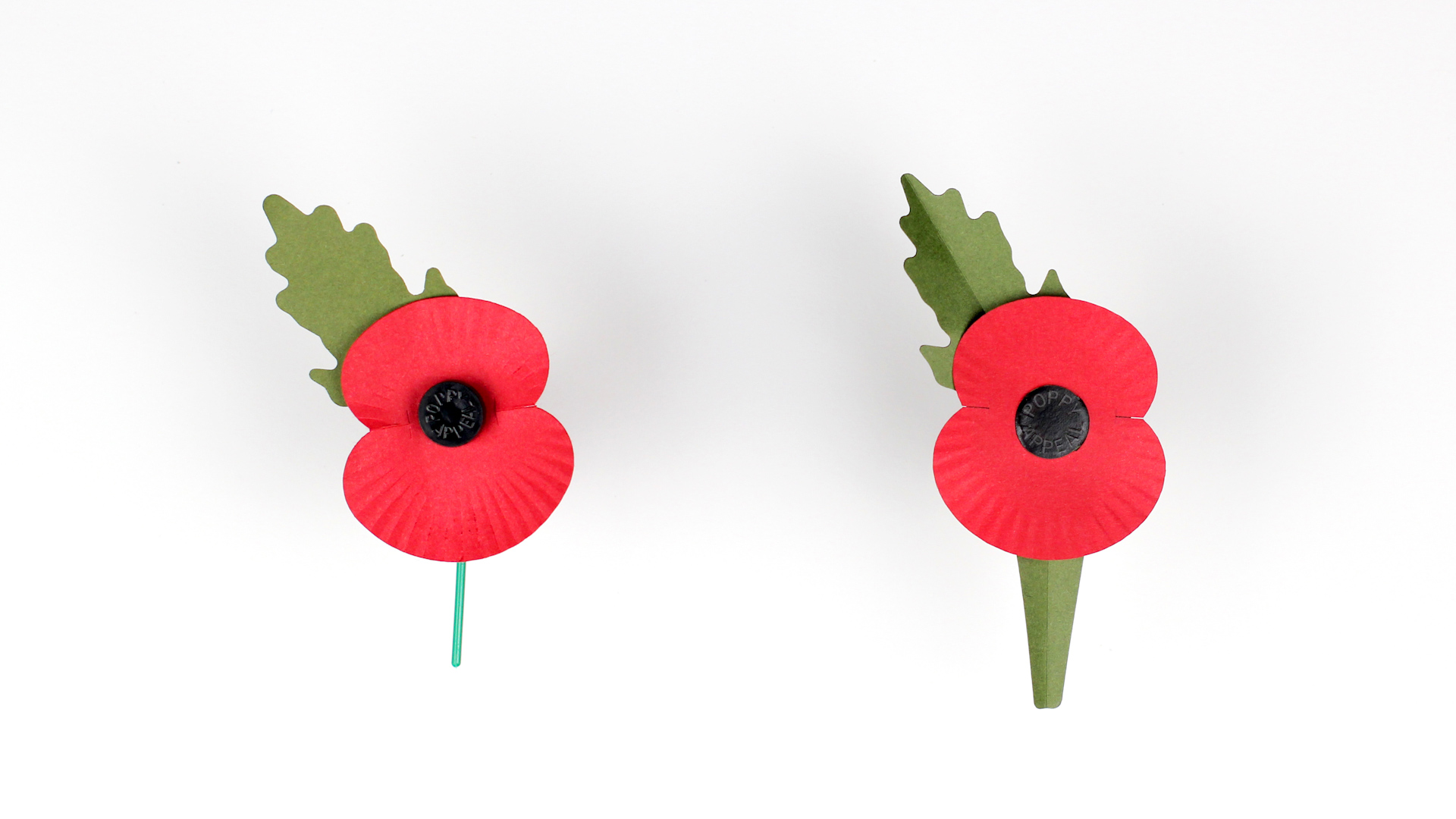
From silk to plastic to paper: The evolution of the poppy

While the design of the remembrance poppy has undergone several changes since its inception in 1921, the profound symbolism behind it remains unwavering.
The poppy pays tribute to the sacrifice of those who laid down their lives during war.
The funds from selling the poppies in the UK go to The Royal British Legion, a charity that has supported the Armed Forces community since its inception in 1921, the same year that the poppy became its symbol.
The poppy is made up of red petals held together by a black centre with a green stem, and sometimes with the addition of a leaf. This has remained the same for more than 100 years, but the materials used to create that symbol have changed throughout the decades.
The red petals symbolise the blood that has been shed on the battlefield, while the black centre represents mourning for those who perished.
From its earliest handmade versions to the modern, mass-produced pins, the design and materials used to create the remembrance poppy have gone through various changes.
The roaring 20s – a different poppy to suit every wallet (and child)
The first poppies were made with crude oil, more exactly a form of distilled crude oil known as bitumen.
Bitumen is commonly used for the construction of roads, as it boasts adhesive and waterproofing qualities.
The semi-hard petroleum substance was moulded to create the black centre of the poppy, serving as an effective adhesive to bind the flower together.
As for the petals, the public of the 1920s had four different poppy materials to choose from depending on their budget.
The ones that could afford it opted for a large poppy made from silk.
There was also a smaller poppy made from cotton or lawn.
Lawn is a type of fabric usually made with cotton. It has a silky texture due to having a high thread count.
Finally, cardboard poppies were designed with the youngest members of post-WWI society in mind.
The child-friendly poppy was the most affordable of the four different types of poppies and ensured that an understanding of the importance of honouring those who made the ultimate sacrifice was instilled from a young age.
The 1930s turn a new leaf
During the 1930s the poppy saw the addition of a small green leaf and a centre that was made from metal.
The materials that the poppy was made from remained the same, but they were now combined – the poppy became double-layered.
The under layer was made from lawn cloth, with an upper layer of silk.
Poppies during the Second World War
The poppy continued to serve as a beacon of hope and a symbol of remembrance during the Second World War.
The design and materials of the poppies reflected the scarcity of resources during those years.
The layers of petals dropped from four to two and silk poppies were made in far fewer numbers.
Paper and card became the primary materials for making poppies. It was cheap, easy to work with and readily available, which meant that poppies could be produced en masse.
This practical and resource-efficient solution meant the poppy could be produced in large quantities to raise more funds for veterans and their families.

A post-war return to elegance
The 1950s saw the return of the two layers of petals and the introduction of a new material – red felt.
With war scarcity and rationing coming to an end, the cardboard poppy was phased out in favour of a more opulent choice.
The felt petals were held together by a wire stem. The leaf had been lost.
Swinging 60s see tradition mixed with modernity
Poppies retained their characteristic red petals and black centres while embracing a minimalist design that epitomised the 1960s aesthetic.
A one-piece petal was introduced in 1967.
The redesign also saw the traditionally bitumen-made centre replaced with plastic, and the once-wire stem was likewise transitioned to a plastic counterpart, marking the first time plastic was used to make the poppy.
The new minimalist poppy remained leafless.
The leaf returns in 1987
Twenty years later the iconic poppy was redesigned once again, returning to a more traditional look.
It emerged that the public preferred poppies with leaves, so the green detail was added back in for the first time since it was taken away in the 1950s.
The leaf became even bigger than before and remains a prominent feature of the poppy until this day.

In 2023 the poppy becomes plastic-free
Millions of Britons can now buy a poppy that is completely plastic-free and 100% recyclable.
This year saw the first redesign of the historic symbol of remembrance in 28 years.
The RBL said analysis from scientists suggests the new design could reduce emissions by 40%.
The new flowers are made from 100% paper which is produced from a blend of renewable fibres from responsible sources.
One of those sources is the offcut created during the production of paper coffee cups, which the RBL says 50% of the paper is made from.
The Scottish poppy, which is a four-petalled design rather than the usual two, is also plastic-free and recyclable.
The enduring sales of millions of poppies during the month of November represent a collective commitment to remembering the horrors of war and paying tribute to those who have died.
All funds raised from the Poppy Appeal go towards supporting Armed Forces personnel, veterans and their families.
Such assistance includes alleviating financial burdens, fostering mental well-being, helping with housing and aiding in recovery from trauma or illness.









